Spray paint is a famous desire for lots of DIY fans and professionals alike because of its ease of use and flexibility. However, there may additionally come a time whilst you need to change the shade or end of an object that has already been spray painted.
The question then arises: can you paint over spray paint? In this newsletter, we can explore the answer to this query and provide you with all of the facts you need to efficiently repaint over spray paint.
Understanding spray paint and its properties:
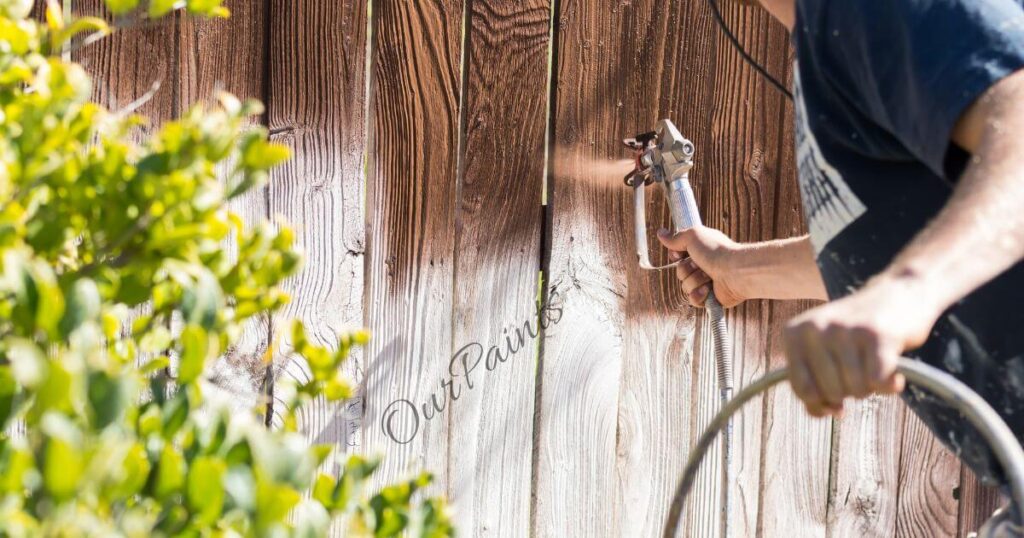
Before we delve into the method of painting over spray paint, it’s vital to recognize the houses of spray paint. Spray paint is a type of paint that is brought in a pressurized can and implemented via a nozzle. It is recognized for its fast-drying houses and capacity to provide a clean and even end.
One of the key issues when portraying spray paint is the compatibility of the new paint with the present spray paint. It is crucial to pick out a paint that is well suited to the spray paint to ensure the right adhesion and an extended-lasting end. In preferred, oil-primarily based paints generally tend to adhere well to spray paint, at the same time as latex paints may additionally have greater trouble adhering.
The condition of the existing spray paint is crucial. If the spray paint is peeling, chipping, or flaking, it is important to address these issues before attempting to paint over it. Proper surface preparation is essential for a successful repaint.
Factors to consider before painting over spray paint:

Earlier than you start to portray over spray paint, there are numerous elements you need to bear in mind. First off, assess the condition of the surface. If the spray paint is in appropriate condition and adhering properly to the floor, you’ll be capable of continuing with repainting.
If the spray paint is broken or not adhering properly, it is recommended to eliminate it entirely earlier than making use of a brand-new coat of paint. One other factor to keep in mind is the form of surface you’re running with.
Different surfaces may require different approaches when painting over spray paint. For example, painting over spray paint on metal may require a different technique than painting over spray paint on wood. It is important to research and understand the specific requirements of the surface you are working with to ensure a successful repaint.
If you are simply seeking to exchange the color of the spray paint, you may have more flexibility in terms of paint selection. In case you need to acquire a particular end or effect, it’s vital to pick the suitable paint and method to achieve the favored result.
Which types of Paint Can you use Over Spray Paint?

You may use water-based and oil-primarily based paints over Spray paint as long as the end is primed and sanded.
Water-primarily based acrylic paint is exceptional to apply because it has polyacrylates (or synthetic acrylic resins) that stick nicely to a sprayed end and convey a vibrant shade that covers the existing end.
Don’t use thin or mild-colored paint in case you want to cover a dark sprayed end. The spray paint will bleed if the new paint has a lighter color. Use a paint with a comparable coloration color and an equal base (solvent) to get nice outcomes.
No kind of paint will stick if the sprayed end is sealed with a water-resistant topcoat. Sealers, such as polyurethane, produce a moisture-resistant layer that protects the surface beneath. You have to either strip the topcoat off or sand it and follow a primer coating earlier than painting over it.
Preparing the surface for repainting:
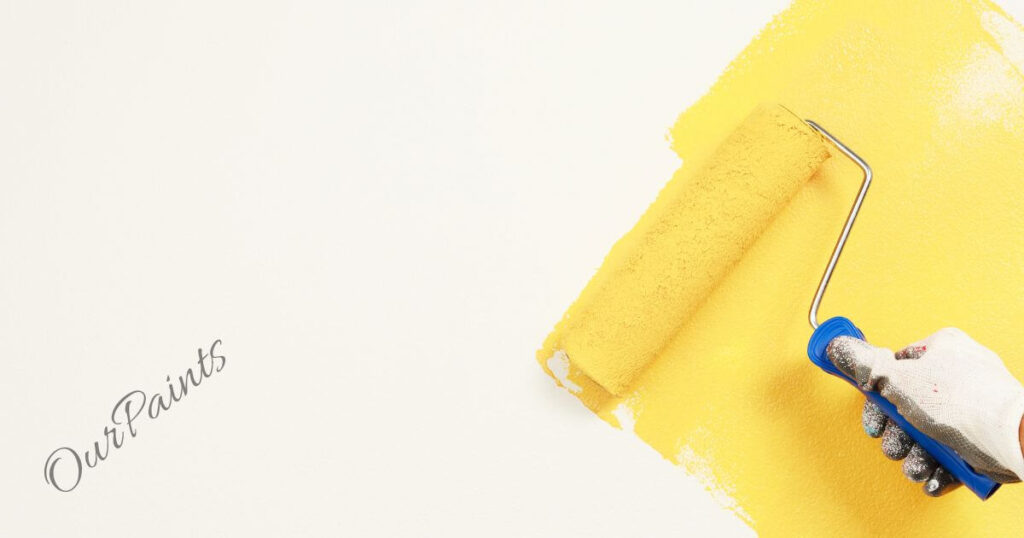
Proper surface preparation is essential when it comes to painting over spray paint. This step ensures that the new paint adheres well and provides a smooth and even finish. Here are the steps to follow when preparing the surface for repainting:
Clean the surface:
Remove any dirt, dust, or grease from the surface using a mild detergent and water. This will make sure that the new paint adheres properly.
Sand the surface:
Gently sand the surface to create a difficult texture that allows the brand-new paint to adhere higher. Use fine-grit sandpaper and sand in a round movement.
Fill any imperfections:
If there are any cracks, holes, or imperfections on the floor, fill them with a suitable filler and smooth it out using a putty knife. It allows the filler to dry completely before proceeding.
High the floor:
Practice a layer of primer on the floor to create an easy and uniform base for the new paint. Select a primer that is well suited to each prevailing spray paint and the new paint you intend to apply.
By following those steps, you may make sure that the floor is well prepared for repainting, ensuring an expert and long-lasting end.
Techniques for painting over spray paint:
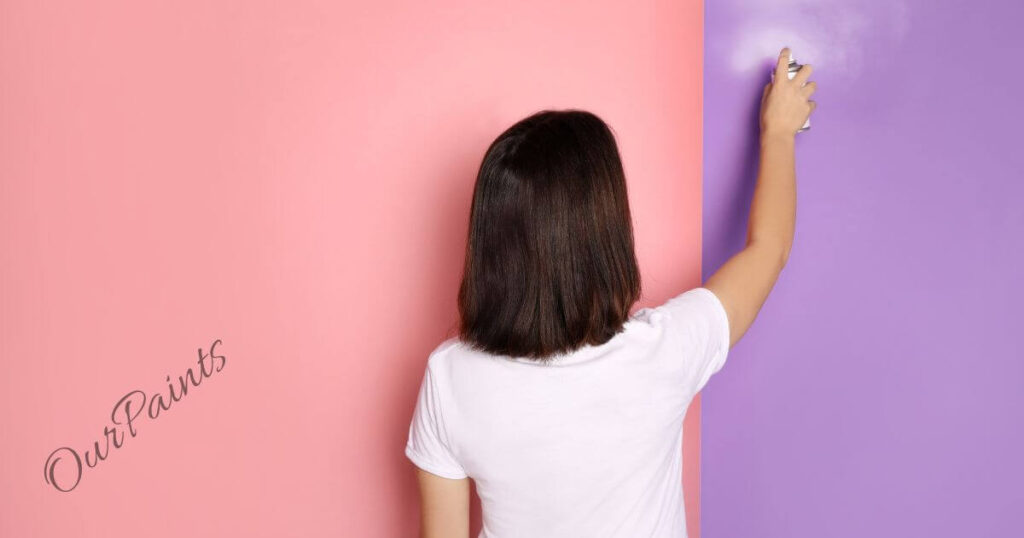
With regards to portray over spray paint, there are numerous strategies you can use to obtain the first-rate consequences. Right here are some common techniques:
Brushing:
This technique entails the usage of a broom to use the brand-new paint over the present spray paint. It’s far more appropriate for smaller regions or tasks that require greater precision. Use a top-notch brush and follow the paint in skinny or even coats to reap an easy finish.
Rolling:
If you are running on a larger floor, together with a wall or a door, the use of a curler may be a green and powerful technique. Choose a curler suitable for the sort of paint you’re using and apply the paint in a “W” or “M” pattern for even insurance.
Spraying:
If you have the right of entry to a paint sprayer, this will be a superb approach for portraying over spray paint. It lets in for brief and even coverage, particularly on larger surfaces. However, it calls for some ability and practice to acquire an expert result.
The method you pick will depend upon the precise assignment and your personal desire. Experiment with different techniques to locate the only one that works high-quality for you.
Tools and materials needed for repainting:
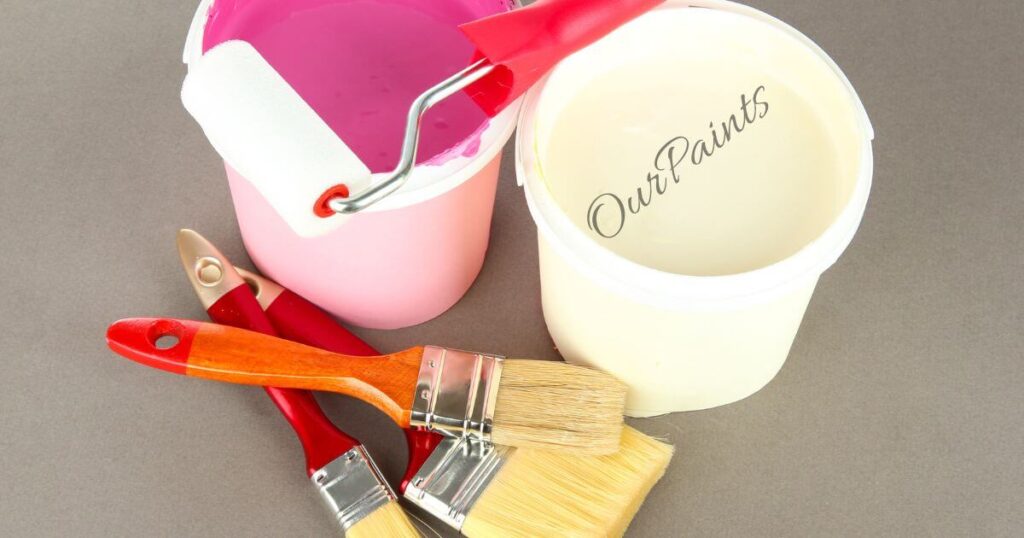
To successfully paint over spray paint, you will need the following tools and materials:
Paint Brushes or rollers:
Depending on the technique you choose, you will need high-quality paint brushes or rollers to apply the new paint.
Sandpaper:
Use fine-grit sandpaper to lightly sand the surface and create a rough texture for better paint adhesion.
Filler:
If there are any imperfections on the surface, you will need a suitable filler and a putty knife to fill and smooth them out.
Primer:
Pick out a primer that is like-minded with both the prevailing spray paint and the brand-new paint you propose to use. The primer will create a clean and uniform base for the new paint.
Paint:
Select a paint that is compatible with the spray paint and suitable for the desired outcome of the repaint. Consider factors such as color, finish, and durability when choosing the paint.
Paint sprayer (optional):
If you have access to a paint sprayer, it can be a great tool for achieving quick and even coverage on larger surfaces.
Make certain that you have all the essential tools and materials earlier than starting the repainting method to avoid any delays or interruptions.
Step-by-step guide to painting over spray paint:
Now that you recognize the basics of painting over spray paint, permit’s stroll through a step-by-step guide to help you acquire a successful repaint:
Assess the condition of the existing spray paint. If it is in inaccurate condition and adhering properly to the surface, you can continue with repainting. If no longer, keep in mind casting off the spray paint completely earlier than applying a brand new coat.
Smooth the floor using a slight detergent and water to take away any dust, dust, or grease. Permit the surface to dry completely earlier than proceeding.
Lightly sand the floor with the use of exceptional grit sandpaper to create a rough texture for higher paint adhesion. Sand in a circular motion and wipe away any dirt with an easy cloth.
Fill any cracks, holes, or imperfections on the floor using an appropriate filler. Easy out the filler with a putty knife and permit it to dry absolutely.
Follow a layer of primer to the floor to create a smooth and uniform base for the new paint. Observe the producer’s commands for application and drying instances.
Once the primer is dry, apply the new paint using the technique of your choice. Use thin and even coats for a smooth and professional finish. Allow every coat to dry absolutely before making use of the next.
If vital, observe additional coats of paint until you obtain the desired color and end. Permit the final coat to dry completely before managing or the usage of the painted item.
By following those steps, you may be capable of effectively painting over spray paint and acquiring an expert and long-lasting finish.
Recommended Products for painting over spray paint:
When portrayed over spray paint, the choice of merchandise can significantly impact the pleasantness and durability of the very last finish. Right here are some advocated products for this purpose:
Primer:
The usage of an excellent primer is vital to ensure the right adhesion and an easy end. Choose a primer that is compatible with the sort of paint you propose to apply (e.g., oil-based or latex).
Paint:
Choose a paint that is like-minded with the primer and the floor you’re portraying. For instance, in case you used an oil-based primer, opt for an oil-based total paint. If you use a latex primer, pick a latex paint. Make certain the paint is suitable for the precise application, whether or not it is for indoor or exterior use.
Sandpaper:
Sandpaper facilitates the preparation of the floor by casting off any imperfections, promoting adhesion, and presenting a smooth canvas for the brand-new paint. You will generally need quality-grit sandpaper (e.g., 220-grit) for this challenge.
Paint Brushes or Rollers:
Brilliant paint applicators will assist you in reaping a clean or even finish. The choice between brushes and rollers depends on your specific project and personal preference.
Clear Coat or Varnish (optional):
To beautify the durability of the painted floor and shield it from damage, consider making use of a clean coat or varnish. This step is in particular treasured for excessive-traffic regions or outside initiatives.
Painter’s Tape and Drop Cloths:
These are essential for protecting areas you don’t want to paint, such as trim, floors, and adjacent surfaces. Painter’s tape provides clean, straight edges, and drop cloths prevent paint spills.
Paint Tray and Liners:
If you’re using a roller, a paint tray, and disposable liners can make the job more convenient and help with easy cleanup.
Respirator Mask and Safety Gear:
When working with paints and primers, it’s important to protect yourself by wearing a respirator mask, safety goggles, and appropriate clothing. Adequate ventilation is also important.
Cleaners and Solvents:
Have cleaning products and solvents on hand to clean up any spills or mistakes immediately. For oil-based paints, you may need mineral spirits or paint thinner, while water can be used for latex paints.
Sandpaper Block or Sanding Sponge:
These tools are handy for smoothing rough spots or blending areas where you’ve sanded.
Tips and tricks for successful repainting:
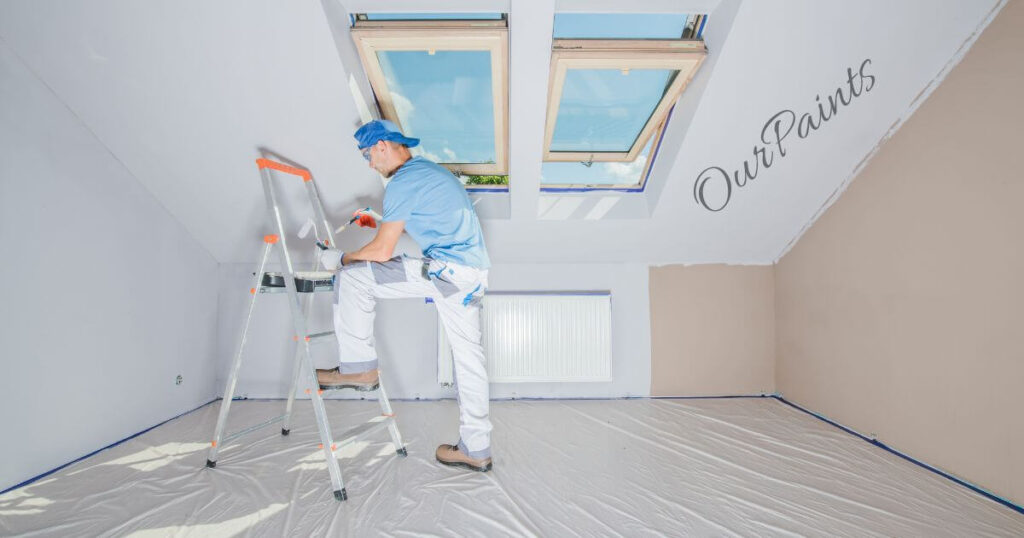
Here are some additional tips and tricks to ensure a successful repaint over spray paint:
Choose the right paint:
Select a paint that is compatible with the existing spray paint and suitable for the desired outcome of the repaint. Consider factors such as color, finish, and durability when choosing the paint.
Test the paint compatibility:
Before applying the new paint to the entire surface, it is advisable to test it on a small inconspicuous area. This will help you ensure that the new paint adheres properly to the existing spray paint.
Apply thin and even coats:
When applying the new paint, it is important to use thin and even coats for a smooth and professional finish. Avoid applying thick coats as it may result in drips or uneven coverage.
Allow proper drying time:
Follow the manufacturer’s instructions for drying times between coats and for the final coat. Proper drying time is crucial for a durable and long-lasting finish.
Protect surrounding areas:
If you are repainting a specific object or area, take the necessary precautions to protect surrounding areas from overspray or accidental paint splatters.
By following these tips and tricks, you can enhance your chances of achieving a successful repaint over spray paint.
Common mistakes to avoid when painting over spray paint
At the same time as repainting over spray paint may be a trustworthy system, there are a few not unusual errors that you must avoid to ensure a clean and expert end. Here are some errors to watch out for:
Not properly preparing the surface:
Skipping or rushing through the surface preparation stage can result in poor paint adhesion and a less durable finish. Take the time to clean, sand, and prime the surface before repainting.
Using incompatible paints:
Using a paint that is not compatible with the existing spray paint can lead to poor adhesion, cracking, or peeling. Ensure that the new paint is compatible with both the spray paint and the surface you are working on.
Applying too thick coats:
Applying thick coats of paint can result in drips, uneven coverage, and a less professional finish. Always apply thin and even coats for the finest results.
Rushing the drying time:
Proper drying time is essential for a durable and long-lasting finish. Rushing the drying time can result in smudges, fingerprints, or damage to the newly painted surface.
By avoiding these common mistakes, you can ensure a successful repaint over spray paint.
Conclusion:
Painting with spray paint is indeed possible with the right techniques and preparation. By using know-how the residences of spray paint, thinking about the elements that have an effect on repainting, and nicely preparing the surface, you could gain a successful and expert repaint.
Recall to select like-minded paints, use suitable techniques, and follow a step-by-step guide to ensure the quality effects. With the proper tools, substances, and a touch of persistence, you may remodel an item that has been spray-painted into something new and interesting. So, go ahead and unleash your creativity by painting over spray paint!
FAQs About Can You Paint Over Spray Paint?
Can you paint over spray paint without sanding it first?
Sanding is typically recommended to create a suitable surface for the new paint to adhere to. While some circumstances might allow for direct painting over spray paint, it’s generally advisable to lightly sand the surface to improve adhesion and the overall finish.
Do I need to use a primer when painting over spray paint?
Using a primer is often recommended when painting over spray paint. A primer helps create a uniform surface and enhances paint adhesion. It’s especially beneficial if you’re switching between different types of paint (e.g., from oil-based spray paint to latex brush-on paint).
Can you paint over antique and peeling spray paint?
It’s now not really helpful to paint over old and peeling spray paint without addressing the peeling problems first. Peeling paint should be removed, and the floor should be properly prepared earlier than applying new paint to ensure a long-lasting finish.
What type of paint can I use over spray paint?
The sort of paint you could use over spray paint depends on the compatibility with the present spray paint and the surface. In most cases, you can use latex or oil-based total paint over spray paint, but it is critical to observe the manufacturer’s suggestions for compatibility.
How long should I wait before making use of new paint over spray paint?
Drying times can vary depending on aspects like temperature and humidity. Generally, you ought to wait till the spray paint is completely dry earlier than making use of new paint. This could take some hours to a full day, so consult with the manufacturer’s commands for unique suggestions.


4 thoughts on “Can You Paint Over Spray Paint?”